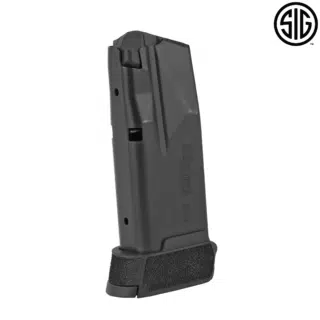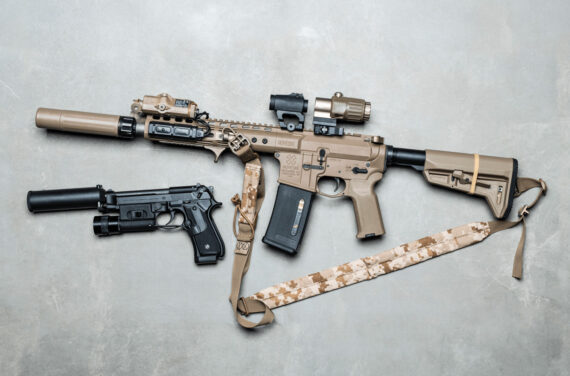Choosing Different Firearms For Different Defense Needs (Self, Home, and SHTF)
Finding the right firearm to protect yourself with is not as easy as everyone makes it seem.
Some will tell you to pick up any shotgun or AR-15 for home defense or SHTF, but we’re not that dense.
Many factors come into play when choosing a firearm with which to defend yourself. Choosing a pistol for concealed carry or self-defense has to be carefully planned and well thought out, or you risk buying something you won’t want to carry.
Buying a huge shotgun or rifle for home defense can be unwieldy. These are just a couple of examples of why it’s not as simple as purchasing the first random gun you come across.
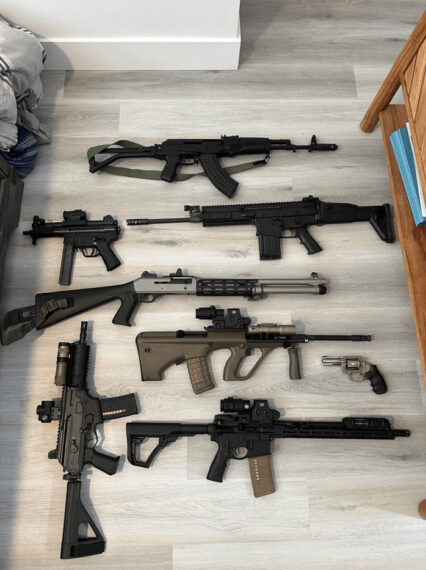
A good home defense collection often consists of many options. Source: reddit
We will discuss how to plan before buying your firearm and what you should consider beforehand. My goal is to ensure you get what you need to protect yourself in the best way possible.
Let’s begin.
Buying a Firearm for Different Defense Needs
There is no one-size-fits-all approach when buying a firearm. Some firearms bridge a gap and are a good middle ground, but we’ll discuss those and more specific options.
Many considerations must be made when buying a firearm for a specific role. Luckily, the considerations aren’t too different between needs. For example, when purchasing a firearm for home defense, you must ensure you can maneuver it easily.
The same thing is true when choosing a firearm for concealed carry or SHTF.
Consider the Size of Your Body
Concealed Carry
The pistol must be comfortable, or you won’t want to carry it at all. It must also be easily concealable so you aren’t telling the world you have a gun. Some people get uneasy around that, and it can cause a stir.
Now, if you’re 6’5 and 230 pounds, your hands will likely also be pretty big. While you can easily conceal a Sig Sauer P365 comfortably, it won’t be the easiest pistol to get a good grip on and shoot accurately.
The bigger you are, the more options you have, but your firearm should match the size of your hands.
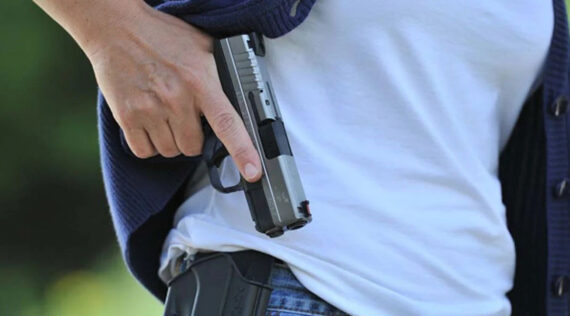
Always make sure it fits your hands well. Source: tacticalgear
I’m 6’0, weigh 190 pounds, and carry a Glock 19x. I happily sacrifice a bit of comfort for a gun that I can get a grip on and shoot well.
Home Defense
When buying a firearm for home defense, you must ensure you’re strong enough to wield it confidently. At one point, I kept an AR-15 with a 14.5-inch barrel for home defense until I realized that my lady had a tough time holding it up, so I bought another upper receiver with an 11.5-inch barrel, and now she has no issues.
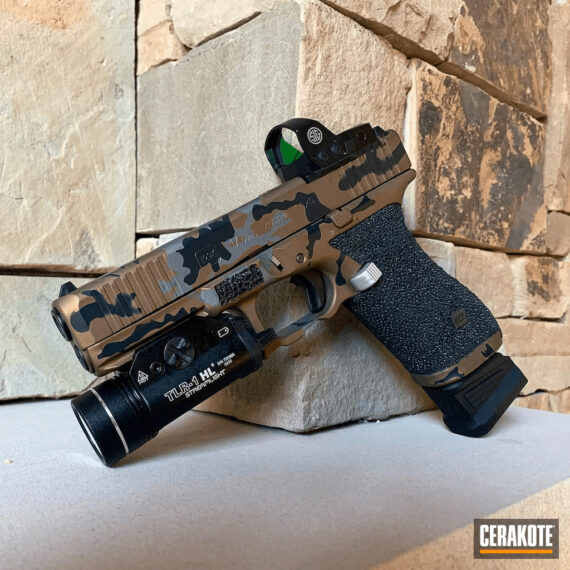
The Glock: A solid home defense option. Source: cerakote
The firearm also shouldn’t be so lengthy that you can’t swing it around corners. You don’t want your gun swinging around the corner well before you do, giving away your position.
SHTF
Finding a firearm for this purpose is an entirely different beast. Many shooters have different ideas of what SHTF will mean for them, whether it be hunkering down at home or rounding up their flock and getting them to a safer area.
Of course, you’ll need a sidearm, but more importantly, you’ll need a primary firearm with more firepower. For maximum versatility, I typically recommend an AR-15 with a red dot or an LPVO.
The same rules apply: make sure you can wield it easily. You don’t want to weigh yourself down too much or have a tough time shouldering it. With training, you will build the muscle to hold it up.
I recommend utilizing a sling and light as well, so make sure you have those at your disposal or look to purchase them quickly.
Pick a Popular Pistol For Carry
Choosing a popular pistol is the best way to ensure that you can find spare parts and holsters for your firearm whenever you need them. If you pick a pistol that doesn’t have aftermarket support or that few shooters carry, you might find yourself wasting money.
This is most important when buying a pistol that you plan to carry. For example, when Staccato released its first pistol, almost no one offered holsters for it, and many shooters couldn’t find a holster that fit their preferences in order to carry it.
The most popular pistol options are Glocks, Sig Sauer, Walther, Smith and Wesson, FN Herstal, CZ, and H&K. Since the first two options (Glock and Sig) are the typical firearms people carry, you’re most likely to find the holster you want for them.
Attachments and Railspace
Every firearm should have space for attachments. One of the things I hate seeing on newer firearms is the lack of rail space for attachments. For example, if you look at the Sig Sauer M400 TREAD, there is little to no space for anything other than an optic.
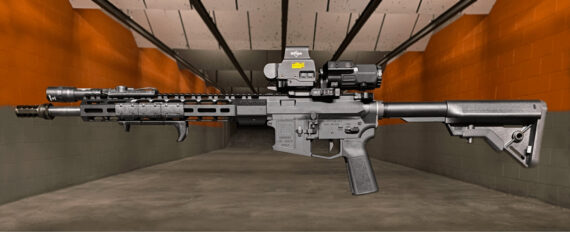
The more space for attachments, the better. Source: howellsgunshop
Some pistol models don’t have an accessory rail for a light, which I consider to be crucial for a self-defense firearm. After all, you have to positively identify your target, or you may shoot something that doesn’t need to be shot.
So, when choosing any defensive firearm, ensure you have ample room for attachments.
Stay away from pistols without accessory rails or optics-ready slides. Likewise, I’d advise you to avoid rifles without full-length Picatinny rails.
Ammo
One of the most critical aspects of picking a firearm for defensive needs is the ammo it uses. How affordable is it, and how easy is it to find? You can’t just buy a firearm and a few boxes of ammo and leave them in the closet for a rainy day.
You have to put a couple hundred rounds through it first and foremost to make sure it will run when you need it to, and then you have to train with it so you can be efficient with it.
Also, some calibers should be used for purposes other than home defense. To keep it simple, nothing over 5.56×45 should be used for home defense.
But in an SHTF scenario, .308 Winchester is the king of all. Sure, it’s expensive. However, you rarely have to ask twice with a full-power rifle round. Be careful, though; it’s too powerful for indoor use.
You will need to pay for all of the ammo for training and defensive use. Typically, the bigger the caliber, the more expensive the ammo.
Ensure you consider the price of ammo before buying a firearm. It’s the most expensive part of firearm ownership.
Conclusion
Now that you have all this in mind, answer the following questions before you begin the search for your next firearm:
- What am I using this firearm for?
- How big should the firearm be relative to my body size?
- Does it have space for attachments?
- How much does ammo cost?
- Are there aftermarket options for the firearm? (Holsters, parts, magazines, etc.)
- How many roles can this firearm fill?
Think through it all as much as you can. Take your time and make sure you’re buying the right firearm. Visit the gun store, too, and get your hands on a few options.
Once you find the one you like, try to rent it and get some rounds downrange to see how it feels and how you react to it. By then, you should be sure about the one you want.
Buy it, along with a case of ammo, and train like your life depends on it…because it does.
Be good and take care.
